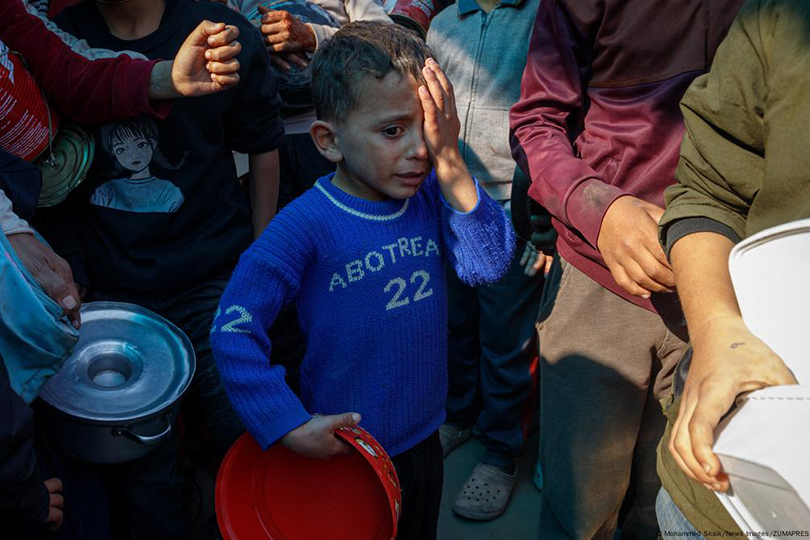Dr. Jumana Jassim Al-Asadi
Childhood is the purest phase of human life—one that is supposed to be filled with play, education, and safe development. However, in areas of armed conflict, this stage turns into a perpetual nightmare, as children become both direct and indirect victims of war. War does not differentiate between civilians and combatants, and the child often pays the highest price—physically, psychologically, and socially. This article explores the reality of childhood amidst armed conflicts, the implications for children's rights, and the future of societies.
Children are subjected to killing and injury due to direct or indirect targeting during bombings or military operations. Many statistics indicate that children make up a large proportion of the casualties of armed conflicts, as seen in Syria, Yemen, Gaza, and Sudan. They may also face displacement and loss of shelter. Millions of children are forced to leave their homes and live in refugee camps or temporary shelters that lack even the minimum standards of safety, food, and healthcare. This displacement exposes them to the risks of forced labor, human trafficking, or sexual violence.
What is even more tragic is their exposure to forced recruitment. In some regions, children are recruited as fighters, weapon carriers, or even "human shields," which is a blatant violation of international humanitarian law. This leads to numerous psychological and social consequences, including ongoing psychological trauma. Children living in conflict zones endure constant fear, and studies show high rates of depression, post-traumatic stress disorder, bed-wetting, and social withdrawal. There is also the loss of childhood, as children in war zones are forced to adopt adult roles—supporting their families, caring for siblings, working at a young age, and making decisions beyond their years. One of the psychological traumas is family separation, as many children lose one or both parents, making them vulnerable to exploitation or institutional living that fails to meet their psychological and social needs.
Thus, armed conflicts inevitably lead to the disruption of education and the threat to the future due to the destruction of educational infrastructure. Schools are targeted or used for military purposes, depriving children of their right to education and forcing some to drop out permanently. This results in a generation without education, creating a knowledge gap that affects societies for decades and weakens post-war recovery efforts.
To protect children, international law includes substantial provisions, such as the Convention on the Rights of the Child (1989), which obliges states to protect children from violence and to provide education, health, and safety—even during wartime. Similarly, the Optional Protocol on the Involvement of Children in Armed Conflict prohibits the recruitment of children under 18 years old in armed conflicts. The Geneva Conventions (1949) also stipulate the protection of civilians, especially children, and consider targeting them a war crime. Additionally, UN Security Council resolutions, such as Resolution 1612, establish mechanisms for monitoring and reporting violations against children in conflicts.
The role of the international community and humanitarian institutions is embodied in relief and care. Humanitarian organizations like UNICEF, the Red Cross, and Save the Children provide food, water, psychological and educational care to children affected by war. They also engage in rehabilitation and reintegration programs aimed at helping formerly recruited children recover psychologically and socially and reintegrate into their communities. Legal accountability is also pursued through efforts to prosecute those who violate children's rights in international courts as war criminals.
However, despite all this, we observe several current challenges that hinder and obscure the implementation of legal provisions. One such challenge is the absence of deterrence and the lack of accountability for perpetrators of violations against children, which allows crimes to continue, especially in asymmetric wars. Another is the politicization of aid, where humanitarian responses are sometimes subject to political agendas, undermining the effectiveness of protection and care programs. There is also the challenge of access; in some conflicts, aid is blocked or relief workers are targeted.
In conclusion, a child in war is not just a temporary victim, but a long-term wound in the body of society. Therefore, protecting childhood is not only a legal responsibility but also a moral and humanitarian one. The world's silence about the suffering of children in wars is not just complicity—it is also an abandonment of the future. Children who are not educated, who do not feel safe, and who lack care will not become builders of peace tomorrow, but rather victims who perpetuate destruction and pain. So, when will we restore childhood's right to life, in a time dominated by death?
Dr. Jumana Jassim Al-Asadi, member of Al-Naba Forum for Dialogue, lecturer at the University of Karbala






Comments